Article
Across the Great Plain of Poland, Part 1: To Wrocklaw and Poznan
Author(s):
It would appear that any part of North America which hopes to do well in the most modern of clean industries, tourism, suffers if all it has to offer the tourist is a great plain of featureless terrain. Poland, however, does not need to create museums across its great central lowlands, European history has already done that.
Many endless plains stretch across our globe. The Great Russian Steppe that allowed Mongol slavers to sweep into Russia from the south for centuries. The Anatolia Plain that required peasants to hide in subterranean towns 30 to 50 levels down every time Greek or Persian armies marched across their land. The great plain of Poland, formed by glacial erosion in the Pleistocene ice age, and exposed the periphery of Poland to neighbors who were anxious to partition this land and add it to their current collection. Indeed Polish guide and geography books take pains to say this: “Poland is an almost unbroken plain reaching from the Baltic Sea in the north to the Carpathian Mountains in the south and the very name of Poland is derived from this land: Wielkopolska and Wielkopolane, the Slav terms for the great plain and its inhabitants.
It would appear that any part of North America which hopes to do well in the most modern of clean industries, tourism, suffers if all it has to offer the tourist is a great plain of featureless terrain. Kansas comes to mind and its answer to all this was to develop marvelous, unexpected museums at intervals along its interstates. Poland, however, does not need to create museums across its great central lowlands, European history has already done that.
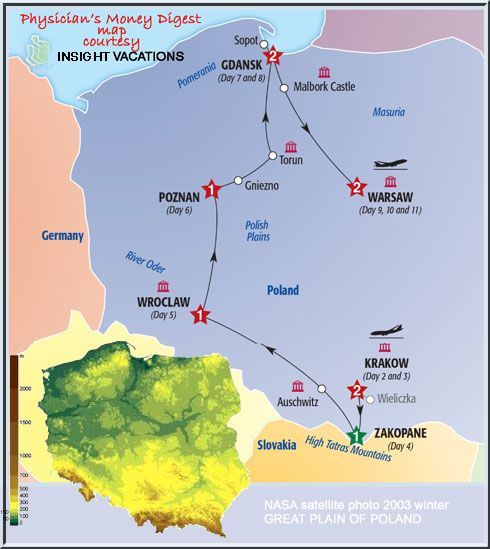
We are not being driven into the wilderness although that would be OK. After all Thoreau called “wildness the preservation of the world." No, Insight Vacations is driving us into the very heart of Polish history, into cities that are architectural gems and “cities of monuments,” cities that saw the birth of a great country.
Cities like Wroclaw that have belonged throughout a long history to Poles, Czechs, Austrians, Hungarians, and Germans. Cities like Poznan that have been claimed as “the cradle of Poland’s commerce.” It saw the first king of Poland crowned in 1025 in a place called Gniezno, 30 miles further on, so named because the nest of a white eagle, in Polish gniazdo, was found here a long time ago. Gniezno has a Gothic cathedral from the ninth century famous for its bronze doors decorated with relief scenes from the life of a saint martyred in 997, about whom more in Part 2 of this Great Plains story. And we’ll have more to say about the town at the end of this plain, Torun where Copernicus was born.
Wroclaw
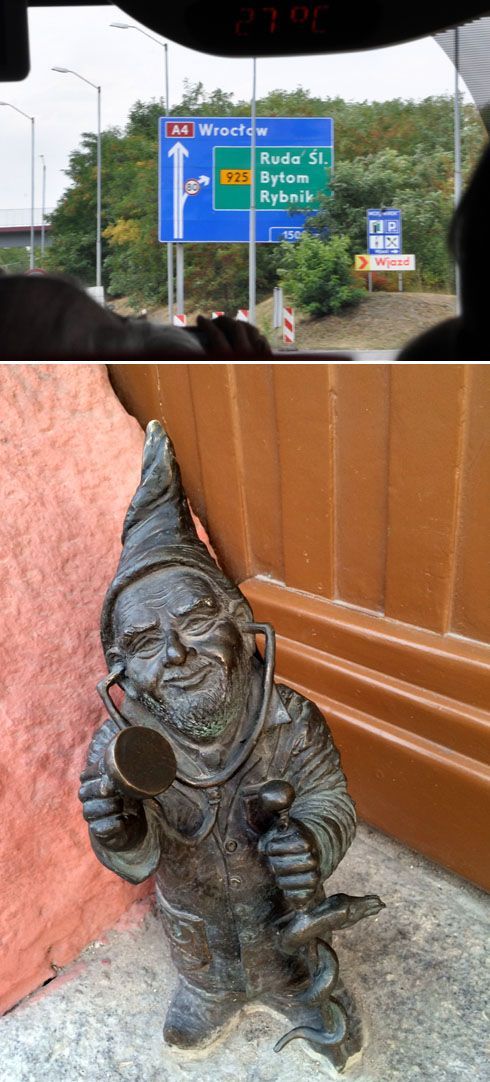
We know what’s first on our list, the college town of Wroclaw. The British newspaper, The Guardian, had a travel story once about this city “called Wroclaw by the British but it might be hard for Brits to find because it is pronounced Vraclav by the Poles!” We wanted to see an especial member of what are called “the Wroclaw Dwarfs,” the little bronzes concealed all around the main square to symbolize how the town’s young intellectuals felt about communism. And the one we were trying to find was the one called Medicus. There are supposedly more than 400 in town now but the numbers keep changing.
Wroclaw (population 650,000) is the fourth largest city in Poland after Warsaw, Krakow, and Lodz. Our next stop, Poznan with 550,000 is the fifth largest (Warsaw has a population of 1.75 million.)
We had read that the students in this old college town Wroclaw were such independents that they were outspoken when Communist China moved against students in Tiananmen Square in 1989. The Polish students made a monument here using an old bicycle but even when the town communist government removed it, it was later replaced.
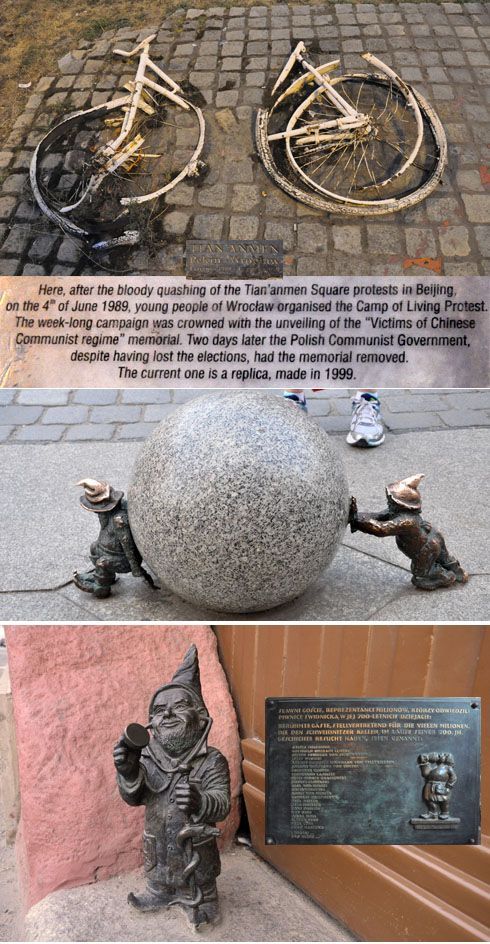
Tiananmen Square Bicycle monument. Dwarfs showing life is hard but Medicus has an encouraging smile.
Once we have with great difficulty found our physician dwarf, we join the rest of our Insight group for dinner in the oldest restaurant in Europe, situated next to the town hall on Wrocław's market square. It used to be the city jail.

Out there since 1273, Piwnica Åšwidnicka is currently the oldest restaurant in Europe. Piotr, our tour director, tells us there was no door into the jail. People sent to prison were simply dropped from a window in the roof on to some straw, the floor of the prison. Quite a drop!
Poznan

Poznan lies about 100 miles north of Wrocklaw, about two hours in our coach. The heavy traffic passing us makes us happy we are not driving on this narrow highway and reminds us that Poznan is an important international trade center. The land, nevertheless, still shows its agricultural base
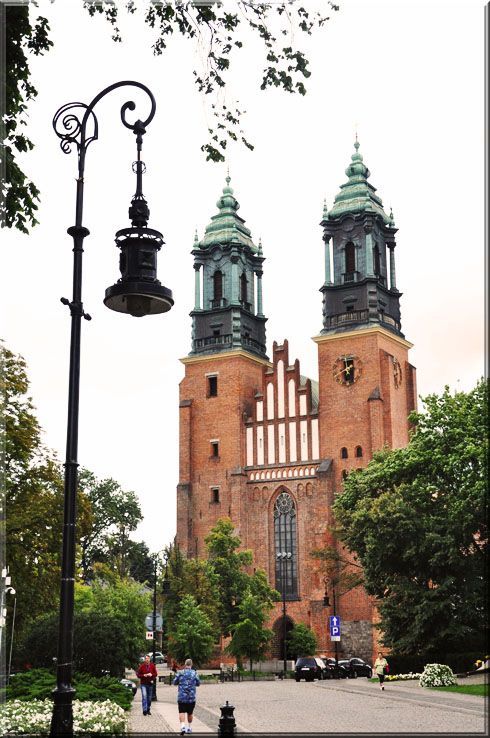
Poland is, of course, proud of its beginnings and guides want you to see where it all began: way back in 968 at the first cathedral built in Poland — and if you muse that it sure looks in good shape that’s because there was a fire in 1622 and again in 1722 and finally in the battle to liberate Poznan from its German occupiers in 1945 about 65% of the cathedral was destroyed. So yes, it’s been razed and rebuilt many times but it still exhibits the sarcophagi of Poland’s first kings Mieszko I and his son, Boleslaw Chrobry and, in the cellars, relics of the first cathedral and tombs of early rulers
Poznan Cathedral is not the most monumental church in Poznan. That would be St. Stanislaw’s Parish Church with its pipe organ of 2,600 pipes and, says, the Polish Tourist Organization, “One of Poznan’s most mysterious buildings, since parts of the crypts have not yet been investigated.” Maybe so but the website Poznan.travel states, “Under the entire temple there is a stretch of cellars where, owing to their specific microclimate, wines were stored in the 20th century.” Maybe drinking men don’t explore.
In countries with a thousand years of history truth sometimes impacts with legend, and we wonder why the local guide Insight Vacations has arranged for us is looking at his watch. He wants us to be standing below the Old Town Hall when the clock strikes noon. He has a surprise for us. At precisely 12:00 a door opens above the clock and two mechanical goats emerge and proceed to butt heads twelve times as they have done since 1551.

We have placed a red dot on top of the tower above the clock so you can see where it’s all happening. The goats have, of course, been replaced and restored over the years and the present pair have been ramming heads since 1954. The full legend follows…
The town hall clock was completed with celebrations in 1551 and the governor of the Poznan province was invited for the unveiling. In the preparation for the feast, the chef burned the venison and, says the Poznan inyourpocket Guide, the hapless cook “managed to steal a pair of goats to serve instead. Alas, the goats escaped and traipsed up to the top of City Hall where the governor saw them butting heads and decreed they be added to the clock.”
We found a free inyourpocket Guide for our major destinations in every Polish Sheraton or Polish Radisson Blu hotel we stayed in and all were vastly superior to any free guide books we’ve seen in the United States.

Homes and former businesses of medieval merchants in town square. Main entrance to St. Stanislaw’s Parish Church. The Leaning Tower of Poznan.
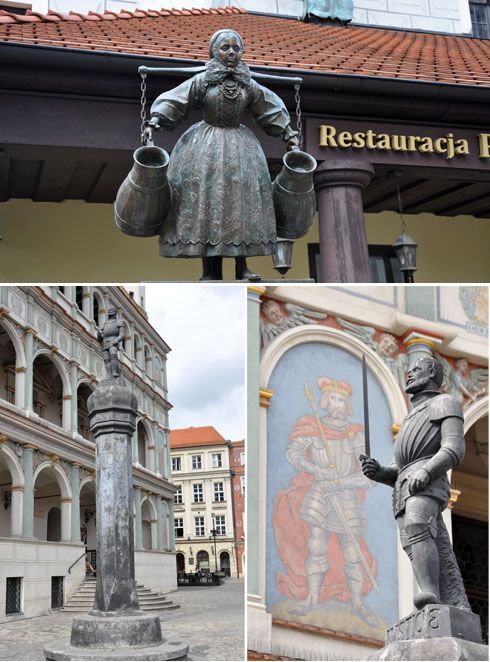
Statue of a poor German Catholic from Bavaria, a “Bamberger” who came at the invitation of the city 300 years ago to help rebuild towns devastated by war and plague. They rapidly became assimilated and even resisted Prussian attempts to re-Germanize them. There is a column in front of the Renaissance town hall, a column that has been called Justice.
Here is the Justice story: Below the column is a pillory where miscreants were chained and (as the presence of the executioner with his sword on top of the column shows) sometimes executed. Our local guide chose this unfortunate moment to tell us about the generosity of neighborhood aristocratic women who, in the Middle Ages, would donate their used clothes to less fortunate younger women. Ultimately this habit ceased when the wealthy women saw and heard how much better the disadvantaged women looked in those gifted clothes than the original owners. The practice of donating clothes ended dramatically when the poor but prettier women were chained for a significant time because of their “impertinence. “The guide’s face showed she was serious in presenting this part of local history.

Before we head for our Sheraton Poznan Hotel, Insight had arranged a private tour for us to the giant LECH brewery where most of us were surprised to see how high tech beer making has become.
As the guys in the coach are all saying, “Wow! Now we know everything about beer,” so we are being told by Piotr our guide that, next up, is a saint, Oops, we’d never heard of St. Wojciech and we will be stopping at a place we’ve also, Oops, never heard of …Gniezno.
Photography by the authorsThe Andersons, who live in San Diego, are the resident travel & cruise columnists for Physician's Money Digest. Nancy is a former nursing educator, Eric a retired MD. The one-time president of the New Hampshire Academy of Family Physicians, Eric is the only physician in the Society of American Travel Writers. He has also written five books, the last called The Man Who Cried Orange: Stories from a Doctor's Life.




